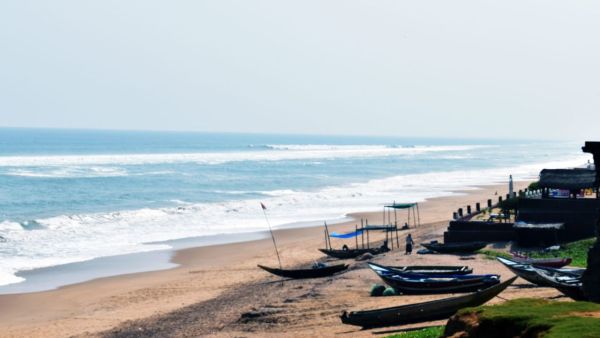
There are many secrets in this world. These residents also have a history of thousands of years. There is also a mystery in Odisha district. That is Khrada district. The capital of Odisha is a place near Bhubaneswar. The slogan Hooda, located about 5 km from the sea, was excavated. Some piles have been found in this excavation. From this excavation, some remains of the ancient culture of East India were found. This culture is called 'chalkolithic'. This shows how the people of ancient times live and how they were farming.
The Indian Archaeological Survey (ASI) team has been excavated here from 2021. In the third phase of excavation, the remnants of the 'chalkolithic' period have been found. According to archaeologists, some of the soil spheres have been found during the excavation. Some of these soil designs have no walls and some do not have walls. Information about the methods used in those days to install the soil walls and pillars have been found. Let's learn about the chalkolithic age and what happened to these walls 3,000 years ago.
Round huts and red walls?
According to archaeologists, the main discovery of the drillithic period here is three-four types of round huts, stone and copper objects. This shows that people of ancient times lived here and started farming. According to a study conducted by archaeologists, it is also said that the area around the huts and courtyards was covered with red soil.
In the excavation, stones and iron killers, copper and bones made from copper and bones, valuable stones, clay beads, pieces of glass bangles, animals of animals, marble stones, toying wheels, stone polish tools, hammering were very important.
At this time, the copperpaste era, which is also known as the Tamar-Pasan era. The beginning of the nineties was started after the new -by -day era, where humans turned to copper weapons instead of using stone killers. This period was approximately from 1 to 8 BC. The use of copper began during this period and is considered to be a part of the bronze era. The colonies of the chalkolithic phase were covered from the Chhota Nagpur Plateau to the Ganges Valley.
Tamra-paddy patio has been found in this place in India.
The chalkolithic era was mainly rural culture. Gilund and Ahar in Rajasthan are Tamriyugin places. The Bordeaux culture was developed on the banks of the Pravara river in Maharashtra. Gilund, Baghur (Rajasthan), Daiabad, Inamgaon, Nevasa (Maharashtra), Navadatoli, Nagda, Kitha, Aran (Madhya Pradesh) are the Chalkolithic places in India. These colonies are much older than Hadappa culture.
Weapons and utensils made from bronze
२०१० Prior to Eastern India, India is known as the beginning of the Tamriyuga. At this time copper equipment was used to make knives, axes, fishing figures, sticks, utensils and many more. Bronze was made by mixing copper and tin, which was more difficult than copper. It was used to make tools and weapons
Nara Hooda has also found earthenware of that time. These are the remnants of red, brown, die, and black pots. In the three years of paper, excavators have found evidence of human habitat at this place in various days. The first time was 'Chalkolithic' (1st to 1st Eastern). The second iron age (1st to 1st) and the third was the early historical period (1st to 1st Eastern). This treasure of Indian heritage is more important than gold reserves.
Life was good in Mahanadi's triangular region, but then they were in a bad position.
This place is from the time of the time of Golbai Sasan, Banga near Harirajar and Mahanadi Tribhuj region. It is older than the penis, which was later built. He also said that the things found during the excavation show that people were living a good lifestyle. But in the latter part of the Iron Age and the early historical times, the lifestyle deteriorated.
Earlier, many items were found in the 'Chalkolithic' era in Nata Hooda and Annala Jodhi village near Tirimal in Khurda district. The 'Chlocolithic' era was a short period of time before the 'Chulkolithic' era. This shows that people lived in this area long ago. The ASI team is still excavating to get more information about this place. They are trying to find out how they lived in ancient times, what they were eating and what to do. This will help you understand your history.
Isko village, famous for the prehistoric rock art, near the Punkari Barwadi Megalithic site near Barakgaon, twenty -five kilometers from Hazaribagh in Jharkhand. These megaliths have their own existence and the Pantri Barwadi place is on the verge of extinction. The area in Hazaribagh, which has ancient caves with the Meso-Slolkolithic rock art of about 3, 6 years ago, have made significant changes due to the coal mines.